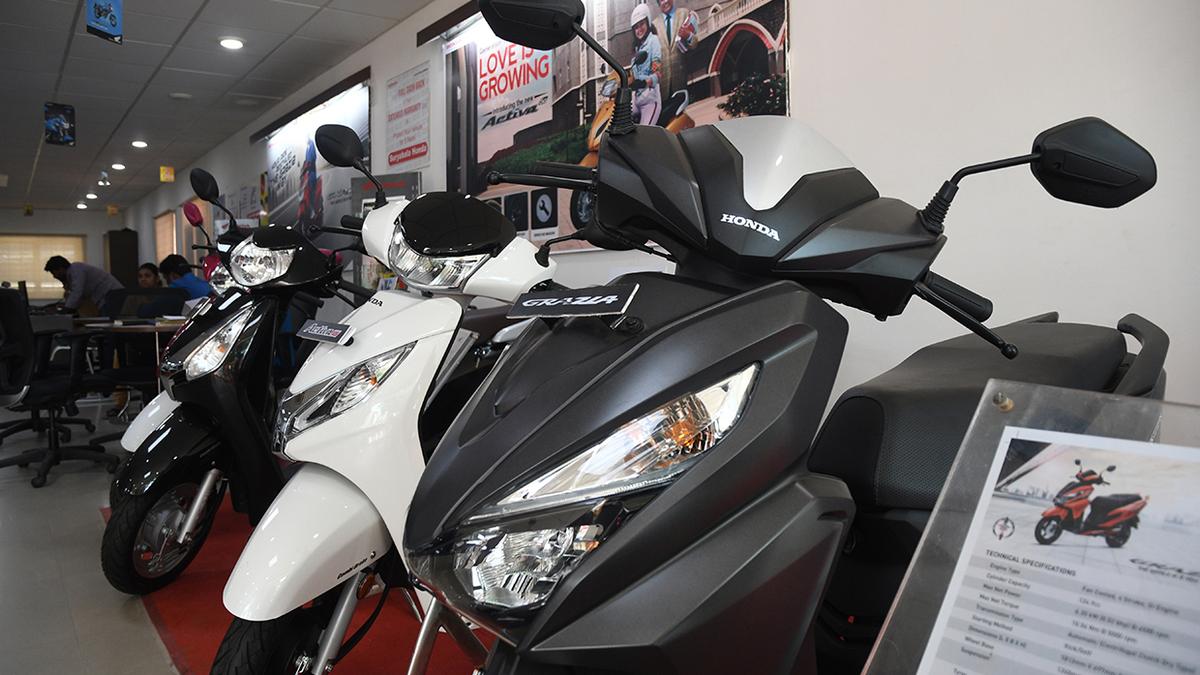The last financial year saw growth in sales of passenger vehicles, two-wheelers and three-wheelers. File (representational image)
| Photo Credit: The Hindu
Overall automobile retail sales in FY25 (from April 2024 to March 2025) grew 6.46% over the previous year with passenger vehicles (PV) growing by 4.87%, two-wheelers (2W) retail sales rising 7.71% and commercial vehicles (CV) de-growing by 0.17%, according to data released by Federation of Automobile Dealers Associations (FADA) on Monday (April 7, 2025).
While two-wheelers grew by 8.39% in rural markets, they grew 6.77% in urban areas. Three-wheelers in rural regions rose by 8.70%, significantly outpacing 0.28% growth in cities during the year. Passenger vehicles also performed better in rural belts with 7.93% growth, compared to 3.07% in urban markets, according to FADA.
For the month of March’25 the overall auto retail sales declined 0.7% year-on-year (YoY) but improved 12% month-on-month (MoM).
Early-month weakness (Kharmas period) was offset by a final-week surge (Navratri, Gudi Padwa, Eid, and year-end depreciation benefits).

Segment wise, two-wheelers de-grew 1.7%, three-wheelers de-grew 5.6%, tractors de-grew 5.7% while passenger vehicles and commercial vehicles grew 6% and 2.6% respectively year-on-year (YoY).
Passenger vehicle stock levels rose to 50–55 days, raising carrying costs, according to FADA.
FADA president, C.S. Vigneshwar said, “FY25 truly showcased how adaptable and resilient India’s auto retail sector can be. A key highlight this year was the strong performance in rural areas.”
On March 2025 performance he said, “The first three weeks of March were notably weak, largely due to the Kharmas period, but sales accelerated significantly in the last week, driven by positive triggers such as Navratri, Gudi Padwa, Eid, and year-end purchasing influenced by depreciation benefits.”
“All segments were in positive territory on a MoM basis. Dealers across segments did, however, raise concerns about exceptionally high targets, which were often set without joint agreement,” he said.

“It is crucial for OEMs and dealers to work hand in hand, setting mutually attainable targets that reflect on-ground realities. Impractically high objectives risk creating confusion and financial strain within the retail network, ultimately hindering efforts to achieve sustainable growth and customer satisfaction,” he added.
Published – April 07, 2025 12:21 pm IST




